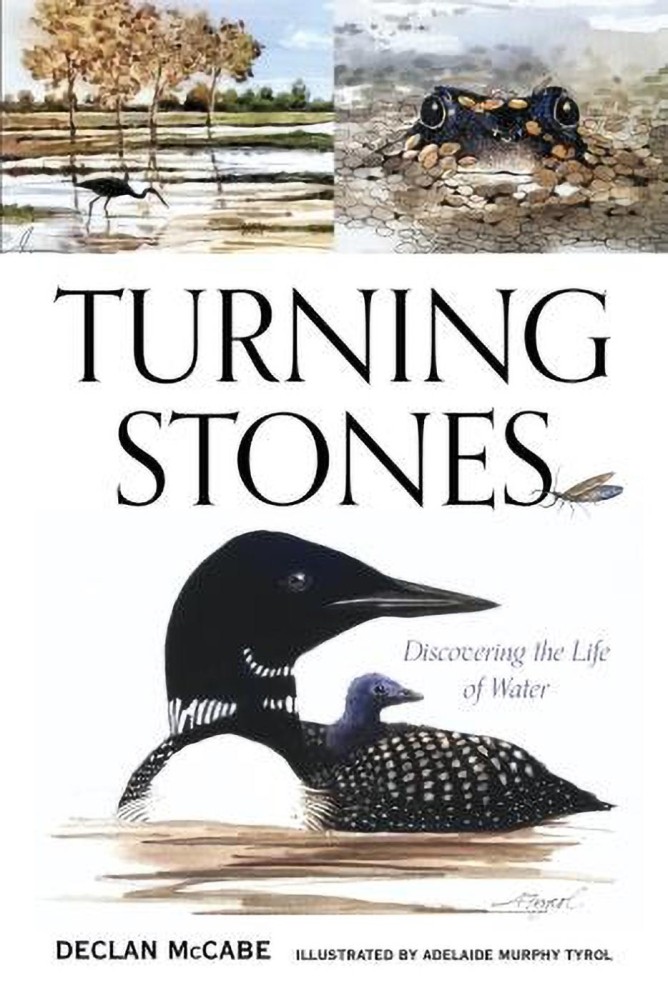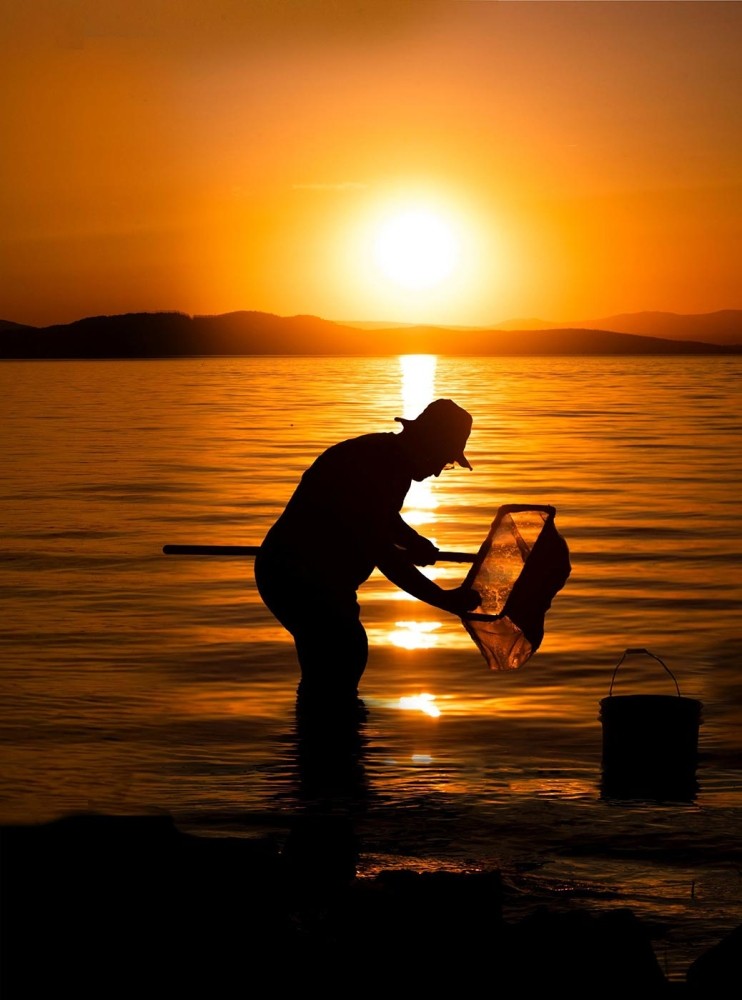Writers in the Woods, a companion series to our Community Voices interviews, focuses on authors and artists whose work relates to the forests of the Northeast. For the first interview in the series, we reached out to Declan McCabe, Northern Woodlands’ popular Invertebrate Bestiary columnist and the author of Turning Stones: Discovering the Life of Water (Down East Books), available here. McCabe is a Saint Michael’s College professor of biology. He and his students study biological diversity in rivers, Lake Champlain, and the Saint Michael’s College Natural Area. He specializes in aquatic invertebrates, supports student research projects on mammals and birds, and encourages tree planting on campus.
Why do you write?
My mission as an educator is to communicate often complex material to bright, entry-level students. I absolutely love all things biological, and I truly love to share that passion with others. In the classroom I can reach 20 to 60 students in a semester. Through writing I can reach a larger community. I write because I’m a teacher, and I teach because I want to share information beyond a tight circle of biologists.
What inspired Turning Stones?
This project grew out of my work with Northern Woodlands magazine and The Outside Story. Both outlets provide platforms for sharing the secret lives of what I consider to be the coolest beasties on the planet. I started with a story about a potentially dangerous centipede that was mailed from Texas to Vermont. Northern Woodlands Executive Director Elise Tillinghast asked me to revise it for The Outside Story. This set me on a new trajectory, and I have now written about 100 of these short essays. I’m inspired by everything from the dobsonflies that crash into the lights on campus, to the drain flies on the shower wall in my local gym.
If your adolescent self could comment on the fact that you’ve written a book on ecology, what would he say? Which essay in the collection would be his favorite?
Adolescent Declan wanted to be a scientist. I think he’d be happy that I had learned enough to write anything worth sharing, let alone a book. Perhaps “Caddisflies: Submerged Silk Spinners” would catch his attention for a few reasons, not least of which is the fact that the essay references younger Declan’s science fair project. For a science fair at age 12, I raised caddisflies with match sticks in their aquarium, and the insects used the matchsticks to build their cases. Forty years later, I worked the observation into an essay.
What is your writing process?
It varies quite a bit. Frequently I stumble into a topic and briefly obsess on learning all I can about it. I wrote about opossums a while back and learned that they had just reached Vermont in the ’90s and were still moving north. So, I dug into old field guides, iNaturalist records, and other data sources to document the northward movement; that ended up being a paragraph. When I can, I like to find nuggets of information in the formal scientific literature that have not yet made it into natural history writing. Such was the case when I submitted a draft about phantom midges migrating up and down in lakes. Northern Woodlands Associate Editor Meghan McCarthy McPhaul asked how they accomplish this migration, and I was about to reply, “We just don’t know.” But I went to Google Scholar for a quick look, and it turned out that the mechanism had been discovered just weeks earlier. The only consistency in my approach happens when there’s a deadline. Then I close my office door, turn on some loud music, and write until I have 1,000 words. Then I go for a walk and come back and cut about 200 words without losing any fun ideas, and I’m good to go.
What is your favorite forest?
I’m deeply fond of 365 acres of floodplain/upland/sandplain forest that we call the Saint Michael’s College Natural Area. If I’m stressed, tired of my computer, or I just need a change of scenery, I can ramble across campus and within 10 minutes I’m in the woods. I draw inspiration for writing, teaching, and research from this little patch of heaven. It has ponds, streams, an oxbow, and the Winooski River. More importantly, it has a vibrant community that includes bright orange slugs, cottonwoods that grow three feet in a year, otters, bald eagles, and a pitch pine that has been there since before the Civil War. The college trustees have entrusted me with the care and management of this amazing plot of land, and I am thoroughly enjoying the experience of working with the Saint Michael’s community and local birders to make this an important island of biodiversity on our doorstep.
What is the best little-known nature book you’ve read?
I have a soft spot for To the Waters and the Wild by Gerrit van Gelderen, based on a TV show of the same name that I grew up on.
What gives you hope?
I am very hopeful that we have the capability of making real positive change in the environment. We brought the bald eagle back from the brink, are addressing the ozone hole, made dramatic inroads with acid rain, and the California condor is still soaring. There’s no doubt that we are in a biodiversity crisis, but we are making some progress and can make even more.
Are you listening to anything great right now?
Rumble Strip is my favorite podcast. I’m a huge Noah Kahan fan – my daughter introduced me, and I saw him play at Higher Ground and on the Burlington water front before he started playing stadiums. I also love Brandi Carlisle. I saw Queen in Dublin in 1986, and their music will always be a favorite.
In your opinion, what’s the most fascinating insect in New England?
Oooh … that’s difficult. Caddisflies in general are my favorite because of the amazing ways that they use silk to make nets, cases, and retreats on rocks. My favorite is Pycnopsyche gentilis – it starts life by making a three-sided tent-shaped case that it hauls about the place. In spring, as it gets older, and leaves are less common, it starts using sand grains and tiny pebbles to make a cylinder-shaped case. If you find one in early spring it may well have leaves in the back half of its case and pebbles in the front.
What are the best and worst things about being an entomologist?
I’ll never run out of cool bugs about which to write. In common with many academics, I’m not fond of grading. In fact, I have successfully postponed grading 18 papers by responding to these questions.




